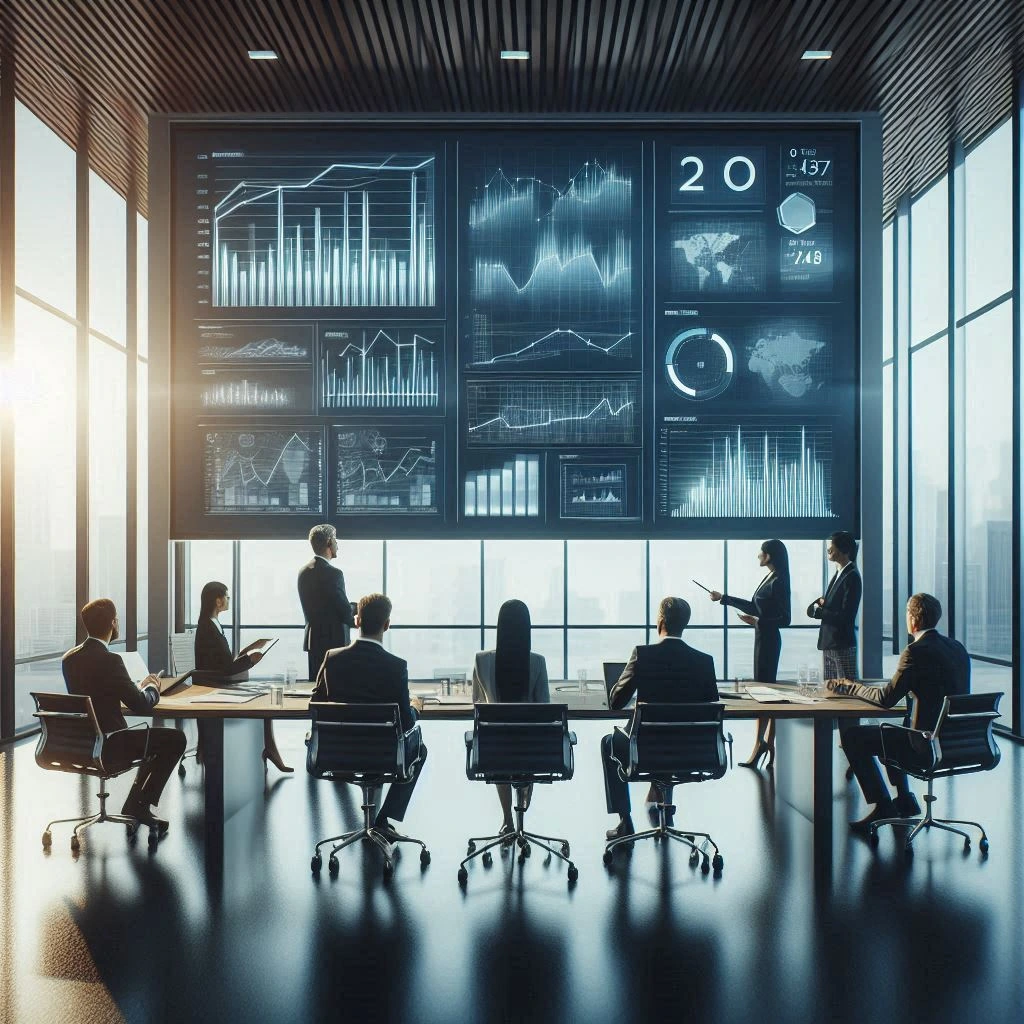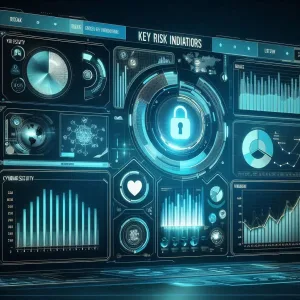In today’s digital age, conducting an internal audit remotely has become increasingly feasible and effective. Internal auditing plays a crucial role in ensuring that organizations operate efficiently, comply with regulations, and manage risks effectively. It involves a systematic evaluation of an organization’s processes, controls, and governance structures to provide assurance and insights that can enhance performance and accountability. The importance of internal audit cannot be overstated, as it helps organizations identify weaknesses, mitigate risks, and improve overall operational effectiveness.
The global shift to remote work, accelerated by events such as the COVID-19 pandemic, has fundamentally transformed the way businesses operate. Organizations were compelled to adapt quickly, ensuring that employees had the necessary equipment and IT protocols in place to work from home effectively. This transition has not only changed the dynamics of daily operations but has also introduced new challenges for internal audit functions. The traditional audit processes, which often relied on in-person interactions and physical documentation, now require a reevaluation to accommodate a remote workforce.
As a result, there is a pressing need for audit managers and internal auditors to modify their audit plans to suit remote environments. This adaptation involves leveraging technology, enhancing communication strategies, and rethinking audit methodologies to ensure robust compliance and effective risk management in a virtual setting. By embracing these changes, internal audit functions can continue to provide valuable insights and maintain their critical role in organizational governance, even in a remote work landscape.
Understanding the Impact of Remote Work on Internal Audits
The shift to remote work has significantly transformed the landscape of internal auditing, presenting both challenges and opportunities for audit managers and internal auditors. As organizations adapt to this new environment, it is crucial to understand how traditional auditing processes are affected and what strategies can be implemented to ensure effective audits.
Challenges Faced by Auditors in Remote Settings
- Communication Barriers: Remote work can hinder effective communication among audit teams and with stakeholders. The lack of face-to-face interactions may lead to misunderstandings and delays in obtaining necessary information [1].
- Access to Information: Auditors may face difficulties accessing physical documents and records that are typically available in an office setting. This can complicate the audit process and require alternative methods for data collection.
- Engagement with Clients: Conducting audits remotely can make it challenging to engage with clients and understand their operations fully. This may affect the auditor’s ability to assess the effectiveness of internal controls.
Changes in Risk Assessment Due to Remote Work
- Evolving Risk Landscape: The transition to remote work has introduced new risks, such as cybersecurity threats and compliance issues. Auditors must reassess their risk frameworks to account for these emerging risks, which may not have been as prominent in traditional settings [1][3].
- Increased Focus on IT Controls: With more reliance on digital tools and remote access, auditors need to place greater emphasis on evaluating IT controls. This includes assessing the security of remote work environments and the effectiveness of technology used for audits [9].
Reliance on Technology and Digital Tools
- Utilization of Collaboration Tools: Internal audit functions can leverage various collaboration tools and project management platforms to facilitate communication and streamline audit processes. These tools can help maintain productivity and ensure that audit objectives are met despite physical distances [9].
- Data Analytics and Electronic Confirmations: The use of data analytics has become increasingly important in remote audits. Auditors can analyze large datasets to identify trends and anomalies, enhancing their ability to assess risks and controls. Additionally, electronic confirmations can replace traditional methods of obtaining evidence, making the audit process more efficient [8].
- Video Interviews and Virtual Meetings: Conducting video interviews and virtual meetings has become a standard practice in remote audits. This approach allows auditors to engage with clients and stakeholders effectively, even when in-person meetings are not feasible.
Adapting internal audit plans for a remote workforce requires a comprehensive understanding of the challenges posed by remote work, the changes in risk assessment, and the increased reliance on technology. By embracing these changes, audit managers and internal auditors can ensure that their audit processes remain robust and effective in a remote environment.
Revising Audit Plans for Remote Environments
In the evolving landscape of remote work, internal audit functions must adapt their strategies to ensure effective oversight and compliance. Here are several key strategies for modifying existing audit plans to suit remote work environments:
- Emphasizing Flexibility and Adaptability: The shift to remote work necessitates a flexible approach to audit planning. Audit managers should establish clear objectives and audit scopes that are feasible within the context of remote operations. This adaptability allows organizations to respond to changing circumstances and emerging risks effectively [5].
- Incorporating Remote Work Risks: It is crucial to integrate the unique risks associated with remote work into audit objectives. This includes assessing the adequacy of IT protocols, data security measures, and employee compliance with remote work policies. By identifying and addressing these risks, internal auditors can provide assurance over the most consequential areas of concern [4][9].
- Adjusting Timelines and Resource Allocation: Remote audits may require different timelines and resource allocations compared to traditional audits. Organizations should schedule recurring short meetings to discuss audit status and capture any concerns from team members. This approach not only keeps the audit process on track but also fosters communication and collaboration among remote auditors and stakeholders [3][7]. Additionally, leveraging collaboration tools and project management platforms can streamline the audit process, ensuring that resources are effectively utilized [6].
By implementing these strategies, internal audit functions can enhance their effectiveness in a remote work environment, ensuring robust compliance and oversight while adapting to the new normal.
Leveraging Technology for Remote Auditing
In the evolving landscape of internal auditing, the shift to remote work has necessitated a reevaluation of traditional audit practices. As audit managers and internal auditors adapt their plans to suit remote environments, leveraging technology becomes paramount. Here are key strategies and insights on how technology can facilitate effective remote audits.
Overview of Digital Tools and Platforms
The integration of digital tools is essential for conducting remote audits efficiently. Organizations have increasingly turned to various platforms to support their audit processes, including:
- Video Teleconferencing: Tools like Zoom, Microsoft Teams, and Google Meet enable auditors to conduct interviews and meetings with stakeholders, ensuring clear communication despite physical distances. These platforms facilitate real-time discussions and decision-making, which are crucial for maintaining audit momentum [3][4].
- Shared File Folders: Utilizing cloud storage solutions such as Google Drive, Dropbox, or OneDrive allows auditors to access and share documents securely. This ensures that all team members have the necessary information at their fingertips, promoting collaboration and transparency throughout the audit process [6].
- Collaboration Tools: Platforms like Slack or Trello can help streamline communication and project management among audit teams. These tools allow for the organization of tasks, tracking progress, and addressing concerns in a timely manner, which is vital in a remote setting [8][15].
Best Practices for Using Video Conferencing and Collaboration Tools
To maximize the effectiveness of remote audits, it is important to establish best practices for using video conferencing and collaboration tools:
- Set Clear Meeting Protocols: Establish guidelines for virtual meetings, including agendas, time limits, and follow-up actions. This helps keep discussions focused and productive, ensuring that all necessary topics are covered [2][9].
- Encourage Engagement: Utilize features such as screen sharing and breakout rooms to foster interaction during meetings. Engaging participants through polls or Q&A sessions can enhance collaboration and ensure that all voices are heard [3].
- Regular Check-Ins: Schedule recurring short meetings to discuss audit progress and address any concerns. This not only keeps the team aligned but also helps in building rapport and maintaining team morale in a remote environment [10].
Data Analytics and Cloud-Based Solutions for Real-Time Audits
The use of data analytics and cloud-based solutions is transforming the way audits are conducted, allowing for more dynamic and responsive auditing processes:
- Real-Time Data Access: Cloud-based solutions enable auditors to access financial data and documentation in real-time, facilitating timely analysis and decision-making. This is particularly important for identifying risks and ensuring compliance in a rapidly changing environment [13][14].
- Enhanced Data Analytics: By leveraging advanced data analytics tools, auditors can analyze large volumes of data quickly and efficiently. This capability allows for the identification of trends, anomalies, and potential areas of concern that may require further investigation [15].
- Automated Reporting: Utilizing technology for automated reporting can streamline the audit process, reducing the time spent on manual data entry and report generation. This allows auditors to focus on higher-value tasks, such as interpreting results and providing strategic insights [6].
Adapting internal audit plans for a remote workforce requires a strategic approach to leveraging technology. By embracing digital tools, establishing best practices for virtual collaboration, and utilizing data analytics, audit managers and internal auditors can ensure that their audit processes remain robust and effective in a remote environment.
Enhancing Communication and Collaboration
In the context of adapting internal audit plans for a remote workforce, effective communication and collaboration are paramount. As audit managers and internal auditors navigate the challenges of remote audits, implementing strategies that foster clear communication and build trust within teams is essential. Here are some key points to consider:
Strategies for Maintaining Clear Communication:
- Establishing open lines of communication is crucial. This can be achieved by utilizing various collaboration tools that facilitate real-time discussions and information sharing. Regular updates and feedback loops can help ensure that all team members are aligned with the audit objectives and processes [2][8].
- Creating a centralized platform for accessing company news, policies, and procedures can enhance transparency and keep everyone informed. This platform should be easily accessible to all team members, allowing them to stay updated on audit developments and expectations [7].
Frequency and Structure of Virtual Meetings and Updates:
- Scheduling regular check-ins is vital for maintaining engagement and accountability among team members. These meetings should be structured to cover key topics, progress updates, and any challenges faced during the audit process. Utilizing video conferencing tools for these discussions can help simulate face-to-face interactions, making communication more personal and effective [3][6].
- It is also beneficial to define a clear schedule for these meetings, ensuring that they are frequent enough to address ongoing issues but not so frequent that they become burdensome. This balance helps maintain momentum while respecting team members’ time.
Building Trust and Rapport in a Remote Audit Environment:
- Trust is a critical component of successful remote audits. Audit managers should focus on fostering a culture of openness and support, encouraging team members to share their thoughts and concerns without hesitation. This can be achieved through informal check-ins and team-building activities that promote camaraderie [8].
- Additionally, recognizing individual contributions and celebrating team successes can help strengthen relationships and enhance morale. When team members feel valued and connected, they are more likely to collaborate effectively and contribute positively to the audit process [9].
Training and Development for Remote Auditors
As organizations adapt to a remote workforce, internal audit teams must also evolve to meet the challenges and opportunities presented by this new environment. Ongoing training and support for audit teams are essential to ensure they possess the necessary skills and knowledge to conduct effective audits remotely. Here are some key points to consider:
- Identifying Skills Necessary for Remote Auditing: Remote auditing requires a unique set of skills that differ from traditional auditing practices. Auditors must develop flexibility management skills to navigate the complexities of remote work effectively. This includes the ability to communicate clearly and collaborate with team members and stakeholders from various locations [11]. Additionally, auditors should be adept at using digital tools and technologies that facilitate remote audits, such as video conferencing and cloud-based data sharing platforms [6][10].
- Opportunities for Virtual Training and Professional Development: The shift to remote work has opened up new avenues for virtual training and professional development. Audit managers should leverage online training programs, webinars, and virtual workshops to enhance their teams’ skills. These platforms can provide auditors with insights into best practices for remote auditing, risk assessment, and compliance with regional standards [4][12]. Furthermore, organizations can encourage participation in industry conferences and forums that focus on remote auditing strategies, allowing auditors to learn from peers and experts in the field.
- Creating a Culture of Continuous Learning in a Remote Setting: Fostering a culture of continuous learning is crucial for maintaining high standards in remote auditing. Audit managers should encourage team members to share knowledge and experiences, creating an environment where learning is valued and supported. Regular check-ins and feedback sessions can help identify areas for improvement and promote professional growth [1][14]. Additionally, implementing mentorship programs can provide less experienced auditors with guidance and support from seasoned professionals, further enhancing their skills and confidence in a remote setting [3][15].
Adapting internal audit plans for a remote workforce necessitates a strong focus on training and development. By identifying essential skills, providing virtual training opportunities, and cultivating a culture of continuous learning, audit teams can thrive in a remote environment and effectively address the challenges of modern auditing.
Monitoring and Evaluating Remote Audit Effectiveness
As organizations increasingly embrace remote work, internal audit functions must adapt their strategies to ensure effectiveness in this new environment. Here are key strategies for monitoring and evaluating the success of remote audit adaptations:
Establishing Metrics and KPIs for Remote Audits
To effectively assess the performance of remote audits, it is crucial to establish clear metrics and Key Performance Indicators (KPIs). These should focus on:
- Audit Completion Rates: Measure the percentage of audits completed on time compared to the planned schedule. This helps in understanding the efficiency of remote audit processes.
- Quality of Findings: Evaluate the relevance and impact of audit findings. This can be assessed through follow-up actions taken by management in response to audit recommendations.
- Stakeholder Satisfaction: Gather feedback from stakeholders regarding the audit process and outcomes. This can be done through surveys or interviews to gauge their perceptions of the remote audit’s effectiveness.
By implementing these metrics, audit managers can gain insights into the performance of remote audits and identify areas for improvement [12].
Utilizing Feedback from Audit Teams and Stakeholders
Feedback is a vital component in evaluating the effectiveness of remote audits. Engaging with both audit teams and stakeholders can provide valuable insights into the remote audit process. Consider the following approaches:
- Regular Check-ins: Schedule frequent meetings with audit teams to discuss challenges faced during remote audits and gather suggestions for improvement. This fosters a culture of open communication and continuous improvement.
- Stakeholder Surveys: Conduct surveys to collect feedback from stakeholders on their experiences with remote audits. This feedback can highlight strengths and weaknesses in the audit process, allowing for targeted adjustments [4][10].
Utilizing this feedback not only enhances the audit process but also strengthens relationships with stakeholders, ensuring their needs are met.
Adjusting Audit Plans Based on Evaluation Outcomes
The evaluation of remote audits should lead to actionable insights that inform future audit planning. Key considerations include:
- Reassessing Priorities: Based on the evaluation outcomes, audit managers should reassess the priorities within the internal audit plan. This may involve shifting focus to areas that require more attention due to emerging risks identified during remote audits [15].
- Incorporating Lessons Learned: Use the insights gained from evaluations to refine audit methodologies and processes. This could involve adopting new technologies or techniques that enhance the efficiency and effectiveness of remote audits [14].
- Continuous Improvement: Establish a framework for ongoing evaluation and adjustment of audit plans. This ensures that the internal audit function remains agile and responsive to the evolving remote work landscape.
By systematically monitoring and evaluating remote audit effectiveness, internal audit teams can adapt their strategies to better suit the needs of a remote workforce, ultimately enhancing the overall audit function.
Conclusion
In the evolving landscape of internal auditing, adapting audit plans to accommodate a remote workforce has become increasingly significant. As organizations continue to embrace remote work, it is essential for audit managers and internal auditors to recognize the unique challenges and opportunities that this shift presents.
- Significance of Adaptation: The transition to remote work necessitates a reevaluation of traditional audit processes. Remote audits, which focus on evaluating cybersecurity and implementing protective measures without physical inspections, highlight the need for a tailored approach that addresses the specific risks associated with a dispersed workforce [3]. This adaptation not only ensures compliance but also enhances the overall effectiveness of the audit function.
- Proactive Planning and Flexibility: It is crucial for audit teams to engage in proactive planning and maintain flexibility in their audit strategies. This involves regularly updating policies, leveraging technology, and fostering a culture of compliance within the organization [7]. By anticipating potential challenges and being prepared to adjust plans as needed, audit managers can better navigate the complexities of remote auditing.
- Innovation in Internal Auditing: The shift to remote work also presents an opportunity for innovation within the internal audit function. Embracing new technologies and methodologies can lead to enhanced efficiency, accuracy, and transparency in audits [4]. As organizations adapt to this new normal, internal auditors should remain open to exploring innovative solutions that can improve their processes and outcomes.
In summary, the future of internal auditing in a remote work environment hinges on the ability to adapt audit plans effectively. By prioritizing proactive planning, flexibility, and innovation, audit managers and internal auditors can ensure that their audit functions remain robust and relevant in an increasingly digital world.
Find out more about Shaun Stoltz https://www.shaunstoltz.com/about/
This post was written by an AI and reviewed/edited by a human.



